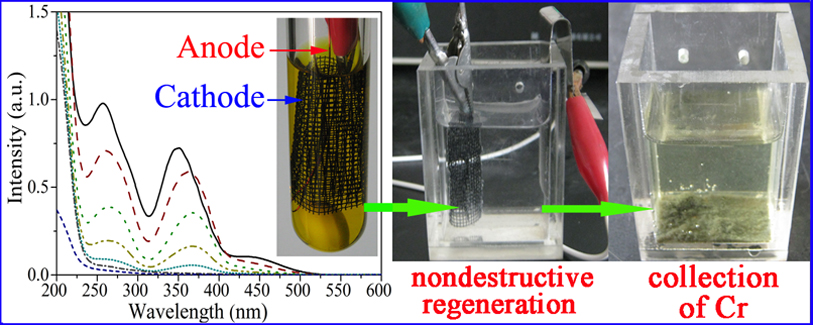
Water and air pollution pose significant health risks to humans, with industrial wastewater containing heavy metals contributing to water pollution and indoor air pollution leading to respiratory concerns.
A research team led by Dr. XU Sichao from Hefei Institutes of Physical Science (HFIPS), Chinese Academy of Sciences (CAS) suggested a Titanium Dioxide Nanosieve Photocatalytic (Water/Air) Purifier in his study, which used nano-titanium oxide to purify air or water in a cost-effective manner.
"We used Ti mesh as the substrate," XU explained, "and rutile TiO2 nanograss was grown on the mesh. The nanograss, which formed a thin coating, was composed of thin TiO2 nanorods with abundantly exposed {110} facets. They served as effective reduction sites and facilitating transfer of the photoelectrons to the surface."
The TiO2 nanograss on Ti mesh (TNTM) showed excellent photocatalytic removal of Cr(VI) ions from plating wastewater under sunlight. After photocatalytic reaction, the TNTM could be nondestructively regenerated by a facile electrolyzation method. The Cr ions on the TNTM could also be collected easily, avoiding a secondary pollution.
The easy fabrication, high removal capacity of Cr(VI) ions, and simple nondestructive regeneration as well as facile collation of Cr(III) ions made TNTM a very suitable photocatalytic architecture for practical application in Cr ions wastewater treatment.
They also conducted experiment in a local pharmaceutical factory for polluted air. The TiO2 nanograss mesh also showed excellent decontaminating effect using the TNTM.
"We hope that our approach will contribute to making environments cleaner and healthier," said XU.

Electric-field-enhanced photocatalytic removal of Cr(VI) under sunlight of TiO2 nanograss mesh with nondestructive regeneration and feasible collection for Cr(III). (Image by XU Sichao)